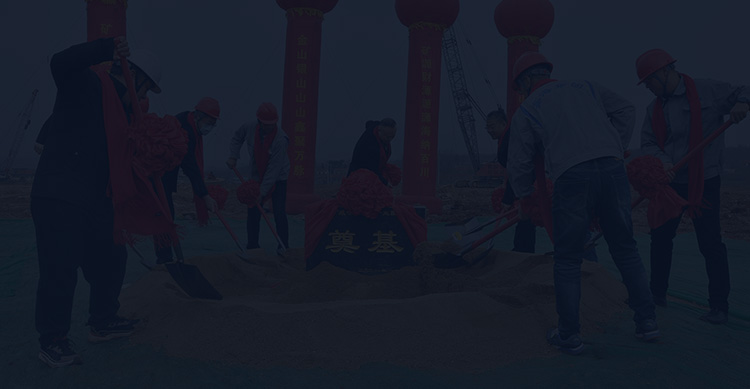
Rutile is a titanium-containing oxide mineral with the chemical formula TiO₂. Rutile is usually dark red, brown or black, with a metallic luster and high hardness. The crystal structure of rutile is tetragonal, and common crystal forms include columnar and needle-shaped. Rutile is mainly produced in metamorphic rocks and igneous rocks, and coexists with minerals such as ilmenite and magnetite. This article mainly introduces the beneficiation methods of rutile!
The conventional beneficiation methods of rutile mainly include gravity separation, magnetic separation, flotation, electrostatic separation and chemical beneficiation.
Gravity separation is a separation method that uses the density difference between rutile and gangue minerals. The density of rutile is relatively large, generally around 4.2-4.3g/cm³, while the density of gangue minerals is relatively small. Therefore, rutile can be separated from gangue minerals by gravity separation. There are several methods, such as shaking table, chute and heavy medium separation.
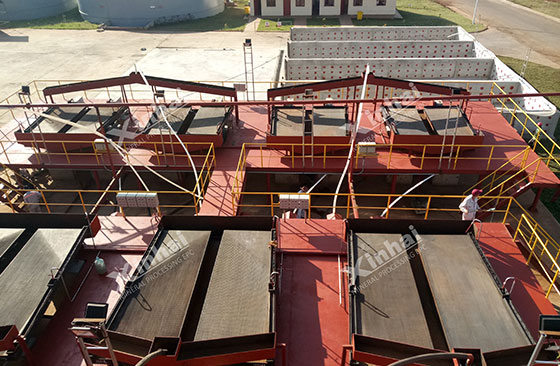
Shaking table: It uses the asymmetric reciprocating motion of the bed surface and the flushing effect of the lateral water flow to separate the minerals of different densities on the bed surface, thereby achieving sorting. It is mostly suitable for recovering coarse rutile.
Spiral chute: It uses the centrifugal force and gravity of the slurry in the spiral trough to make the minerals of different densities deposit at different positions of the spiral trough to achieve sorting. It is mostly suitable for the roughing and sweeping of rutile.
Heavy medium: It uses the characteristics of heavy medium (such as ferrosilicon, magnetite, etc.) that the density is greater than the density of gangue minerals but less than the density of rutile to separate rutile from gangue minerals. This method has high sorting efficiency and large processing capacity, but the equipment investment and operating costs are high.
Magnetic separation is a method of separation using the magnetic difference between rutile and gangue minerals. Rutile is generally a weakly magnetic mineral, while gangue minerals are mostly non-magnetic minerals. Therefore, rutile can be separated from gangue minerals by magnetic separation. Dry magnetic separation, wet magnetic separation, etc.
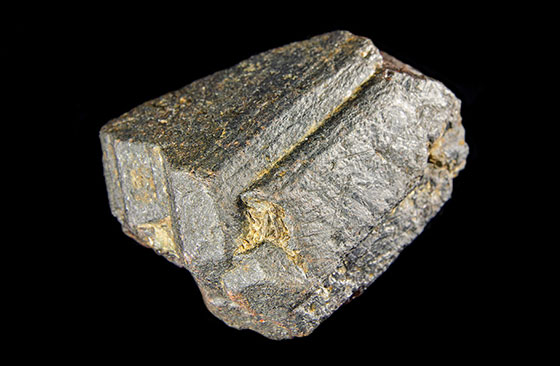
Dry magnetic separation: It is a magnetic separation method carried out in a dry state, suitable for processing coarse-grained rutile ore. Dry magnetic separation equipment mainly includes permanent magnetic drum magnetic separator, dry magnetic separation roller, etc. Dry magnetic separation has the advantages of large processing capacity and low cost, but the separation accuracy is relatively low.
Wet magnetic separation: It is a magnetic separation method carried out in water or other liquid media, suitable for processing fine-grained rutile ore. Wet magnetic separation equipment mainly includes wet permanent magnetic drum magnetic separator, wet high gradient magnetic separator, etc. Wet magnetic separation has the advantages of high separation accuracy and strong adaptability, but the equipment investment and operating costs are high.
Flotation is a method of separation that utilizes the difference in surface physical and chemical properties between rutile and gangue minerals. Rutile has a certain degree of hydrophobicity, while gangue minerals are mostly hydrophilic minerals. Therefore, by adding flotation agents, the surface of rutile can be made hydrophobic, so that it can be captured and floated by bubbles during the flotation process and separated from the gangue minerals. Conventional flotation, chelate flotation and combined flotation can be used.
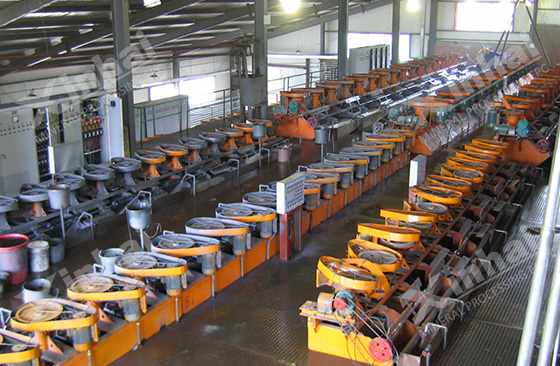
Conventional flotation: It is a method of flotation of rutile using collectors such as fatty acids and amines. It has the advantages of simple operation and low cost, but the sorting accuracy is relatively low, and the recovery effect of fine rutile is poor.
Chelating flotation: It is a method of flotation of rutile using chelating agents as collectors. Chelating agents can form stable chelates with metal ions on the surface of rutile, making the surface of rutile hydrophobic, thereby improving the flotation recovery rate and grade of rutile. Chelating flotation has the advantages of high sorting accuracy and strong adaptability, but the price of chelating agents is relatively high and the cost is relatively high.
Combined flotation: It is a method of comprehensive sorting of rutile by combining multiple mineral processing methods such as gravity separation, magnetic separation, and flotation. Combined flotation can give full play to the advantages of various mineral processing methods and improve the mineral processing efficiency and grade of rutile.
Electrostatic separation is a separation method that uses the difference in electrical conductivity between rutile and gangue minerals. Rutile has a certain electrical conductivity, while gangue minerals are mostly non-conductive minerals. Therefore, rutile can be separated from gangue minerals by electrostatic separation. There are two methods: high-voltage electrostatic separation and friction electrostatic separation.
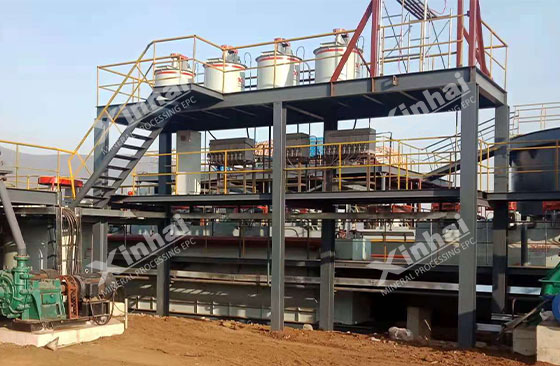
High-voltage electric separation: It is an electric separation method carried out in a high-voltage electric field, which is suitable for processing fine-grained rutile ore. High-voltage electric separation equipment mainly includes high-voltage electric separation machine, electrostatic ore separator, etc. High-voltage electric separation has the advantages of high separation accuracy and large processing capacity, but the equipment investment and operating costs are high.
Triboelectric separation: It is a method of separation using the friction electrification phenomenon between minerals. During the triboelectric separation process, different charges will be generated between rutile and gangue minerals, which will be subjected to different forces in the electric field to achieve separation. Triboelectric separation has the advantages of simple equipment and low cost, but the separation accuracy is relatively low.
Chemical beneficiation is a method of separating rutile from gangue minerals by chemically reacting chemical reagents with rutile. Chemical beneficiation methods mainly include acid leaching, alkali leaching, chlorination, etc.
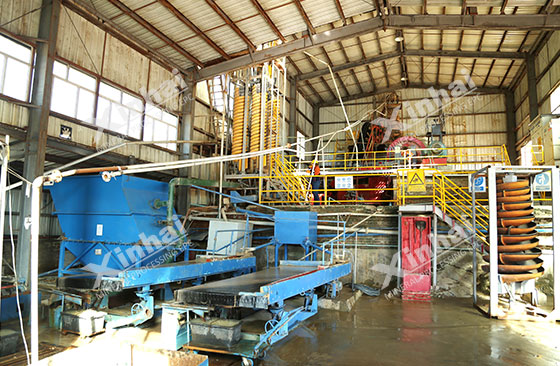
Acid leaching: Acid leaching is a method of leaching rutile using acid reagents such as sulfuric acid and hydrochloric acid. Acid leaching can effectively remove impurities such as iron and aluminum in rutile and improve the grade of rutile. However, the acid leaching method will produce a large amount of acidic wastewater, which needs to be treated, otherwise it will pollute the environment.
Alkali leaching method: Alkali leaching method is a method of leaching rutile using alkaline reagents such as sodium hydroxide and sodium carbonate. Alkali leaching can remove impurities such as silicon and aluminum in rutile and improve the grade of rutile. The wastewater generated by the alkaline leaching method is relatively small, but the alkaline leaching process needs to be carried out at high temperature and high pressure, and the equipment investment and operating costs are high.
Chlorination method: The chlorination method is a method of chlorinating rutile using chlorine, hydrogen chloride and other chlorinating agents. The chlorination method can convert titanium in rutile into titanium tetrachloride, and then prepare titanium dioxide through distillation, oxidation and other processes. The chlorination method has the advantages of short process flow and high product quality, but the chlorination process needs to be carried out at high temperature, and the equipment investment and operating costs are high, and it will also cause certain environmental pollution.
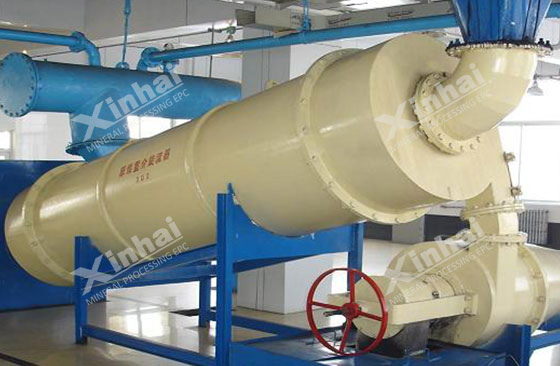
The above is an introduction to the beneficiation method of rutile. In actual production, the beneficiation method of rutile should be determined according to the ore properties of the rutile ore and the scale of the beneficiation plant. Therefore, it is recommended to conduct beneficiation test analysis and design a suitable beneficiation method through experiments to improve the beneficiation efficiency and grade of rutile and realize the efficient utilization of rutile resources.
To find out more about our products and solutions, please fill out the form below and one of our experts will get back to you shortly.